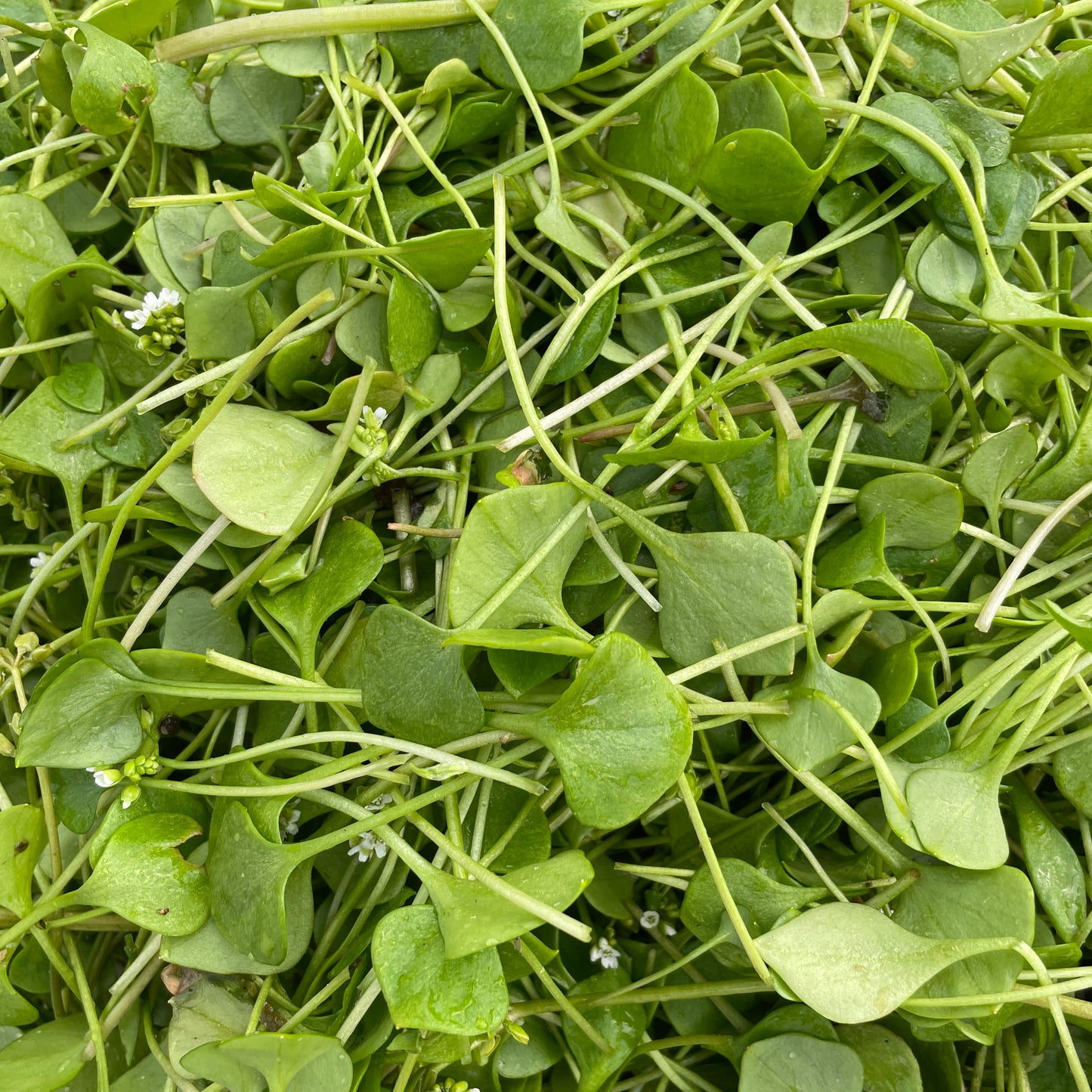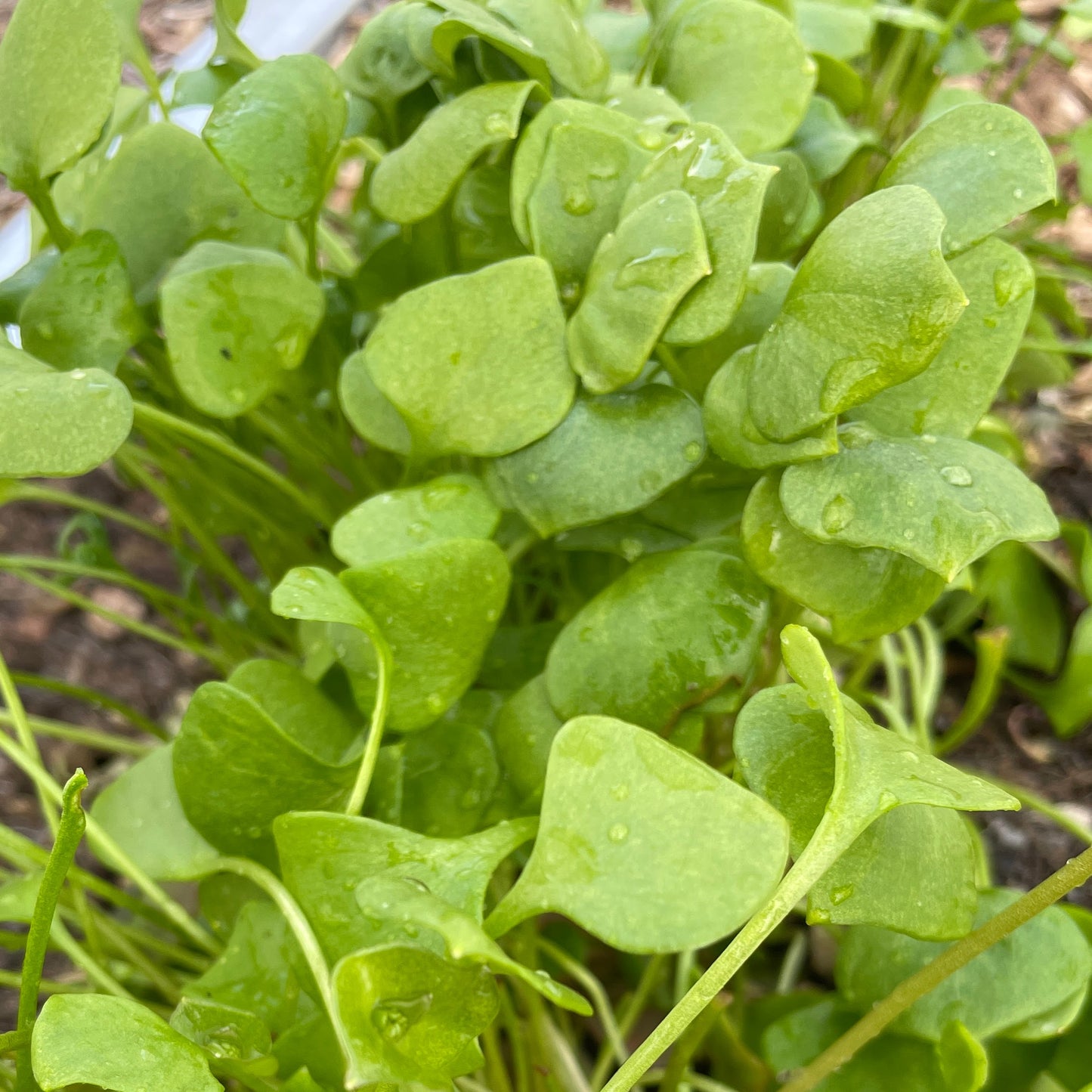Faircrest Farms
Miner's Lettuce (Claytonia)
Miner's Lettuce (Claytonia)
Couldn't load pickup availability
Miner's lettuce (Claytonia perfoliata) is a nutritious leafy green, particularly known for its high vitamin C content and also contains vitamin A, iron, and beta-carotene.
Nutritional value:
Vitamin C: A significant source of vitamin C, contributing to a healthy immune system.
Vitamin A: Contains vitamin A, important for vision and cell growth.
Iron: A good source of iron, essential for carrying oxygen in the blood.
Beta-carotene: Contains beta-carotene, which the body converts into vitamin A.
Protein: Contains protein, which is important for building and repairing tissues.
Carbohydrates: Contains carbohydrates, which are the body's primary source of energy.
Fiber: Contains fiber, which aids in digestion and promotes a feeling of fullness.
Calcium and Phosphorus Ratio: The calcium:phosphorus ratio is 0.66:1.0.
Oxalate Content: The leaves contain high levels of oxalate, comparable to many oxalate-rich foods such as spinach, Swiss chard, beetroot and rhubarb.
More Nutrition Facts
This sought after wild green is a plant that not only tastes good but contains lots of nutrients. According to a study in the Journal of the American Dietetic Association, 100 grams of miner's lettuce contains a third of your daily requirement of vitamin C, 22 percent of vitamin A, and 10 percent of iron. During the gold rush, miners ate them to prevent scurvy, giving the species its common name. This plant is a native winter annual broadleaf plant in the Montiaceae family.
Edible Parts: The entire above-ground portion of the young plant is edible, including leaves, stems, and flowers.
How to Eat:
The leaves of miner's lettuce can be eaten raw, boiled, or steamed.
Historical Significance:
Miner's lettuce was an important food source for California Gold Rush miners, who relied on its high vitamin C content to prevent scurvy. It was also used by Native Americans and early settlers as a salad plant and potherb.
Season:
Available from January through April - grown in the winter.




